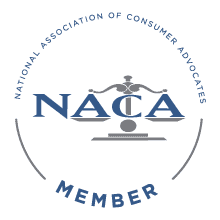Most consumers don’t realize that when they file a credit report dispute, the process is handled through a private system called e-OSCAR—built by the credit bureaus, not by lawmakers or regulators. This system reduces disputes to short codes and often prevents meaningful investigations. As a result, false information may remain on your report even after you dispute it. If your credit dispute has been ignored or mishandled, you may have legal rights under the Fair Credit Reporting Act (FCRA).
CFPB Sues Experian
On January 7, 2025, the CFPB filed a lawsuit against Experian alleging that Experian violated FCRA by failing to properly conduct reinvestigations of disputed information in consumer credit files; failing to delete inaccurate, incomplete, or unverified information in consumer credit files; failing to provide adequate written notice to consumers of the results of its reinvestigations; failing to prevent the improper reinsertion of previously deleted information from consumer credit files; and failing to follow reasonable procedures to assure maximum possible accuracy of the credit information Experian reports on consumers. In addition, the complaint alleges that Experian committed unfair acts or practices in violation of the Consumer Financial Protection Act of 2010 by (1) failing to convey consumers’ disputes to furnishers fully and accurately, and instead distorting, truncating, and mischaracterizing consumers’ disputes; (2) relying excessively on furnishers to resolve disputes, routinely doing nothing more than sending the dispute to a furnisher and implementing the furnisher’s response, despite having evidence of that furnisher’s unreliability; and (3) improperly reinserting tradelines into consumer credit reports due to its practice of failing to adequately match newly reported tradelines to tradelines that were previously deleted as a result of a dispute if the subsequent furnishing was from a new furnisher. The Bureau seeks, among other things, to bring Experian into compliance with the law, consumer redress, and the imposition of civil money penalties.
What is e-OSCAR?
e-OSCAR is the “Online Solution for Complete and Accurate Reporting” system through which the consumer reporting industry (consumer reporting agencies and data furnishers) resolve disputes brought by consumers concerning the accuracy of information maintained in their credit files.
When a consumer contacts a consumer reporting agency with a dispute, the agency transmits an electronic form called an ACDV through e-OSCAR to the data furnisher. The data furnisher responds to the consumer’s dispute by returning the ACDV through e-OSCAR. For example, if a consumer disputes the accuracy of the payment history on their Citibank credit card to Trans Union, Trans Union will send an ACDV to Citibank informing Citibank of the consumer’s dispute and Citibank will respond to that dispute by returning the ACDV to Trans Union.
e-OSCAR also allows data furnishers to correct or delete a consumer’s account by sending an electronic form called an AUD. When a consumer contacts a data furnisher and requests a change of information that has been previously reported, the data furnisher researches the account. If the data furnisher verifies that the account information in question needs to be modified, the company will use the e-OSCAR system to complete an AUD.
What is an ACDV?
The e-OSCAR System
When delving into the credit reporting world, it is easy to get lost in the terminology. You see a lot of acronyms in credit reporting such as: CRA, DF, FICO, and FCRA, but this blog will discuss e-OSCAR.
What is e-OSCAR?
OSCAR stands for “Online Solution for Complete and Accurate Reporting”. The “big three”: Experian, Equifax, and TransUnion owns and created this software in 1993.
Put simply, e-OSCAR is an automated credit dispute system. This system was created due to the mass amount of manpower needed to process consumers’ claims of mistakes on their credit reports. According to the Federal Trade Commission, at least 1 in 5 consumers has an error on one of their three credit reports and 1 in 4 of these errors have a negative impact on the consumers’ overall credit scores. It is recommend that you check your credit report at least once a year and report anything that seems incorrect. As of now, consumers are able to obtain their credit reports for free once a week until April 2022 due to the pandemic.
Consumers can submit a complaint to the credit reporting agency by phone, online, or by mail. It is best to submit your dispute by mail, using certified mail, so that you have verification that they received it and that a real person will look into it.
The bureaus receive letters topping the thousands each day. The bureaus created e-OSCAR to streamline the dispute process.
Credit Disputes and e-OSCAR
Credit disputes involve a 3-step process:
The credit bureau receives a credit dispute letter.
An employee reads the letter and assigns one of e-OSCAR’s 29 three-digit codes to classify the type of error.
The employee enters this code along with basic information about the consumer and creditor. They may also enter one or two lines of explanation.
e-Oscar Coding
When the credit reporting agency receives a dispute they enter it into the e-OSCAR system. Next, an e-OSCAR representatives categorize the complaint in one of 29 three-digit dispute codes. These codes include:
001 — not his/hers.
002 — belongs to another individual with same/similar name.
008 — late due to change of address or never received statement.
010 — settlement or partial payments accepted.
019 — included in the bankruptcy of another person.
038 — claims account closed by consumer.
In addition to the code that best fits the dispute, the agency may enter a few lines of explanation. Once e-OSCAR receives this data, the system creates and records a formal dispute. It then distributes the information to the other credit reporting agencies and to the appropriate data furnishers.
Issues with e-OSCAR
Credit disputes are unique and complicated. Critics of the e-OSCAR system believe that neither a 3-digit code nor 2 lines of explanation are sufficient. Attorneys encourage consumers to send as much evidence as possible to support their claim. This makes it harder to credit bureaus to later claim that the error is your fault because you didn’t send enough informational evidence. Critics also question whether e-OSCAR staff fully review additional documents that provide support to the consumers complaint.
What to Know About Disputes
Under the Fair Credit Reporting Act (FCRA), the Consumer Reporting Agency (CRA) has up to 45 days to resolve a dispute. If the error involves an account with your organization, the credit bureau will usually reach out to investigate the item you reported. CRA’s resolve only 15% of complaints without involving the data furnisher. After you provide a response to the dispute, the CRA will notify you of the verdict. The error will either be validated and will be corrected, or they have determined there was no error and the item is reported as accurate.








